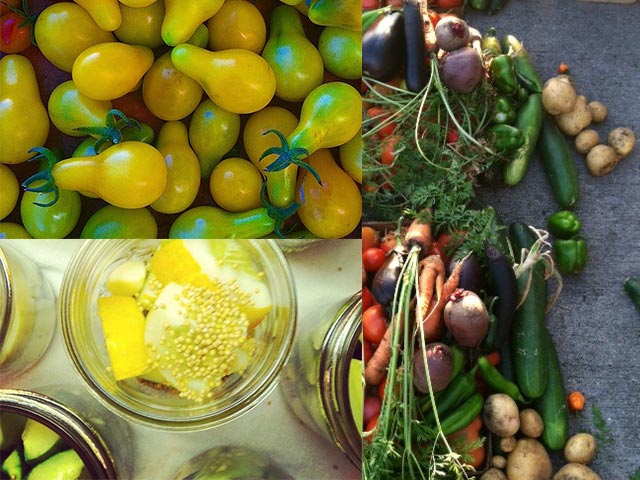
Preserving your garden vegetables, along with drying culinary herbs and freezing produce are all excellent ways of making sure you reap the rewards of your garden (or savvy in-season produce buying) throughout the year.
Over the years, I have found some excellent resources for saving my harvest. Here are a few of my favorites:
- The Kitchn has some great advice if you are hesitant about jumping in to home canning, 10 Ways to Save the Season Without Canning. My personal favorite is the Roasted Tomato Sauce with Garlic recipe. I have even added fresh peppers and onions from the garden to the recipe with delicious results.
- You can preserve your harvest in a number of ways, including canning, freezing, fermenting, drying and pickling. The Zero-Waste Chef, Anne-Marie Bonneau, believes that fermenting is the way to go. Her site is full of great information and recipes.
- Ball, the company with the canning jars and accessories, has a great site to help with all things related to preserving. There are step-by-step guides, reference tools and much more.
- Saving the Season is entertaining, well-written blog about “home canning …and it will cover jams and other fruit preserves, pickles and briny things, canned vegetables (above all tomatoes) and the complement of condiments that includes relishes, sauces, salsas and those related preparations that result when you chunk bits of seasonal produce and preserve them in a syrup either piquant or sweet.”
- Rodale’s Organic Life recently came out with a great article about preserving produce. It’s a how-to on Freeze It, Dry It, Eat It Later.
Whether you grow your produce in your garden, are a member of your local food co-operative or frequently shop at the farmer’s markets, knowing how to preserve the plentiful harvest of the summer will help you decide which fruits and vegetables to grow (and buy) and how to successfully store them for the winter months.
The most important thing to do is utilize your produce in some way, preserve it or give it to someone who needs it. AmpleHarvest.org is an amazing organization that enables millions of growers in this country to donate excess garden produce to a local food pantry. Find more information, at http://ampleharvest.org/.
Food waste is a serious issue. Here are some sobering facts:
- According to the Food and Agriculture Organization (FAO), approximately 40 percent of food in the U.S. goes to waste. And roughly one third of the food produced in the world for human consumption every year — approximately 1.3 billion tons — gets lost or wasted.
- According to the Environmental Protection Agency (EPA), food waste that goes to the landfill breaks down anaerobically and produces methane; methane is 21 times more potent than CO2 as a greenhouse gas.
- In 2008, the EPA estimated that food waste cost roughly $1.3 billion to dispose of in landfills.
- Less than 3% of food waste was recovered and recycled [composted] in 2010, as reported by the EPA.
For more information about food waste and how you can make a difference, visit http://www.endfoodwastenow.org/.